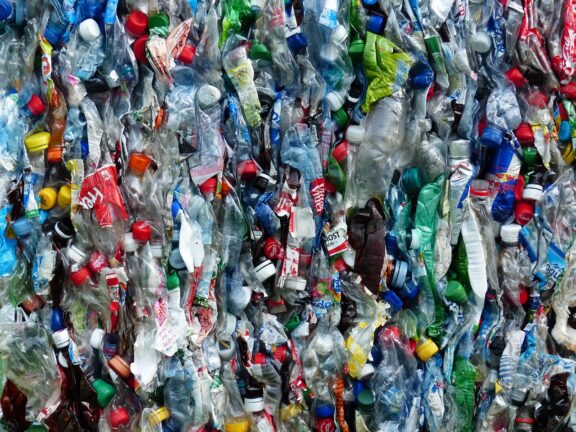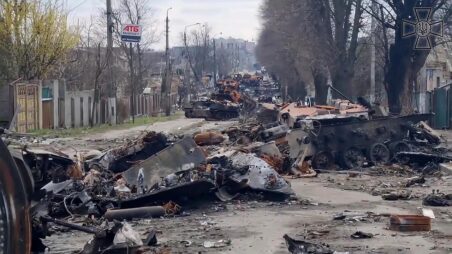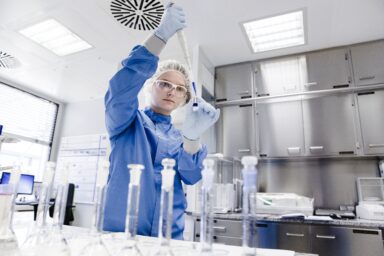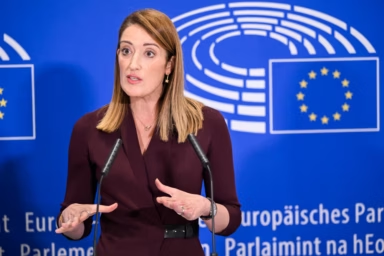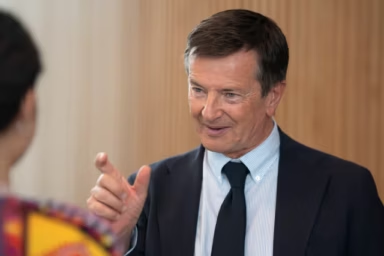A sixth round of negotiations began in Switzerland this week as scientific evidence mounts of how harmful plastic pollution is. But differences between supporters and opponents of measures aimed at reducing it are deeper than they were when this process started three years ago.
The US administration of President Donald Trump has sent letters to at least a handful of countries urging them to reject the goal of a global pact that includes limits on plastic production and plastic chemical additives, Reuters reported.
The US delegation, led by career State Department officials who had represented the Biden administration, sent memos to countries laying out its position and saying it will not agree to a treaty that tackles the upstream of plastic pollution. “We will not support impractical global approaches such as plastic production targets or bans and restrictions on plastic additives or plastic products – that will increase the costs of all plastic products that are used throughout our daily lives,” said the memo.
Necessity, imperative, emergency
One of the world’s leading producers of plastics, the US has also proposed revising the draft objective of the treaty to reduce plastic pollution by eliminating a reference to an agreed “approach that addresses the full life cycle of plastics” in a proposed resolution. The US stance broadly aligns with the positions laid out by the global petrochemicals industry. A number of powerful oil and petrochemical producer countries have held this position throughout the negotiations.
Plastic knows no borders. This treaty must be global, ambitious, and enforceable. — MEP Yvan Verougstraete (Renew/BEL)
The said position is anathema to many, particularly on the other side of the Atlantic. For some Members of the European Parliament, this moment cannot end in inaction or half-measures: the planet can no longer afford to wait, they claim. “We can no longer allow short-term interests to block decisions that are vital for the future of our planet. This treaty is a necessity. An imperative. An emergency,” MEP Yvan Verougstraete (Renew/BEL) asserts in a statement emailed to EU Perspectives.
“In the face of obstruction from oil-producing countries and the ambiguity of some major players, we call on the European Union to adopt a firm, clear, and ambitious stance. Words are not enough; the EU must bring its full diplomatic weight to bear to ensure a strong, binding, and universal treaty,“ the statement reads. The EU is known to adhere to strict environmental and health measures if global bodies recommend them.
You might be interested
A call for global justice
“Plastic knows no borders. This treaty must be global, ambitious, and enforceable. The most vulnerable countries are paying the price for our inaction. This is also a matter of global justice,” Mr Verougstraete declares with a dose of optimism easily described as remarkable, given how any notion of global justice has fared lately.
“Political cowardice is not an option. This treaty is the wall standing between us and ecological disaster. If it collapses under lobby pressure, we will all pay the price. We must choose: a future buried in plastic, or a future worth living. Compromise can no longer be an excuse for backtracking,” the Belgian MEP thunders.
The gathering convened by the United Nations is the sixth round of talks, after a previous “final” conference in Busan, South Korea, failed last winter. In the interim, there have been numerous negotiations to wrangle down the proposed text of the treaty. This cuts down on the work that delegates need to do in person.
Conflicting visions
“We are here to find a solution while not leaving anyone behind, and while ensuring that the economic wheels will keep turning,” Inger Andersen, executive director of the UN Environment Programme, said at the opening press conference Tuesday. “What is sure is that no one wants to live with the plastic pollution,” Bloomberg reported her as saying.
But disagreements exist even among countries which support the treaty. A fundamental rift opened between countries that want a broad treaty capping the amount of new plastic produced and certain toxic chemicals in them, and a smaller group that wants to limit the agreement to improving plastic waste collection and boosting recycling. This split has dominated previous rounds of talks.
What is sure is that no one wants to live with the plastic pollution. — Inger Andersen, executive director of the UN Environment Programme
“I do see that division persisting,” said Erin Simon, vice president and head of plastic waste and business at the World Wildlife Fund. Along with many NGOs, the fund is pushing for a stricter treaty.
‘A grave, growing danger‘
Jessica Roff, plastics and petrochemicals campaign manager for the Global Alliance for Incinerator Alternatives (GAIA) US & Canada, described the US position as “disappointing.” “The only way to effectively address the plastic crisis around the world is to have a legally binding treaty with production reduction at its core,” she said.
Meanwhile, the volume of plastic in the world and the scientific record of its risks keep rising. Last week, a paper in the Lancet that warned of a “grave, growing” danger from the rising tide of the material, and put its health-related economic costs at more than €1.5tn a year.
According to a 2024 OECD report, the production of plastics is growing at an alarming pace. It doubled between 2000 and 2019, from 234 to 460 million tons. Without more ambitious policies, the amount of plastics produced around the world is to reach 736 million tons by 2040.
Hazard in every breath
Of the 16,000-plus chemicals in plastics, more than one-fourth are known to be hazardous to human health, while the majority have never been tested for toxicity, according to a recent paper in Nature. These chemicals appear to be found in every major plastic type, the study found.
But already, some have been linked to reproductive conditions, lower IQ in children and cancer and stroke risk in adults, with the highest risks seen when exposure occurs in utero, in infancy or in early childhood. Scientists are in the early stages of understanding the health effects of microplastic and nanoplastic particles, which have been detected in human organs, blood and semen.
A paper published just last week finds that adult humans inhale 68,000 lung-penetrating microplastic fragments a day — 100 times previous estimates. Another from last year found that patients with the particles in the walls of their blood vessels had a higher risk of heart attack, stroke or death roughly three years later.
Worse than expected
There’s also evidence that plastics’ impact on climate change is more powerful than previously thought. A 2024 paper by researchers at Lawrence Berkeley National Laboratory found that in 2019, primary plastics production generated 2.24 gigatons of CO2 equivalent, or 5.3 per cent of total greenhouse gas emissions that year — significantly more than one previous estimate of 3.4 per cent.
It’s taken us a while to realize the threat plastic pollution poses. — Philip Landrigan, Boston College Professor of Biology
A new initiative called the Lancet Countdown on Health and Plastics will monitor global efforts to reduce plastic exposure and mitigate its risks. It is a joint project of Boston College, Heidelberg University in Germany, the Centre Scientifique de Monaco and Australia’s Minderoo Foundation.
“Plastic has been kind of invisible, overshadowed by the climate crisis, by air pollution, by things like wildfires,” said Boston College Professor of Biology Philip Landrigan, lead author of the new Lancet literature review and a co-chair of the initiative. “It’s taken us a while to realise the threat plastic pollution poses.”
